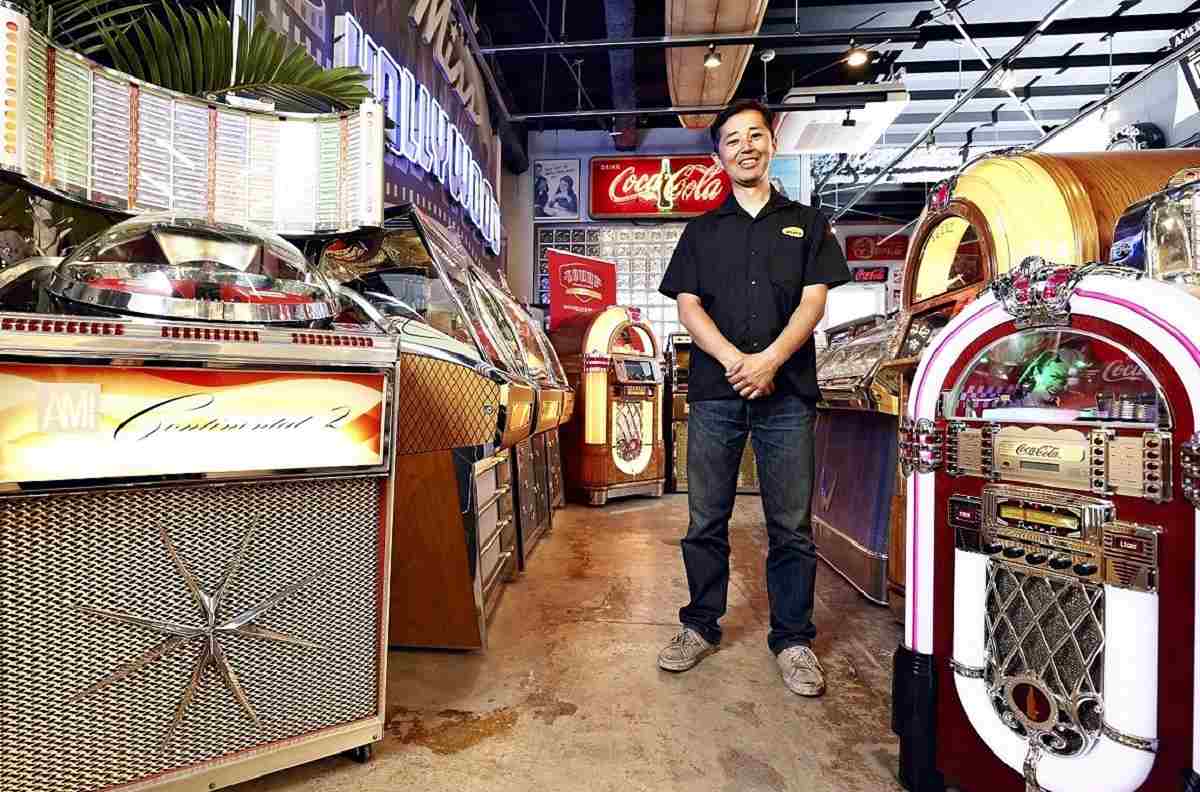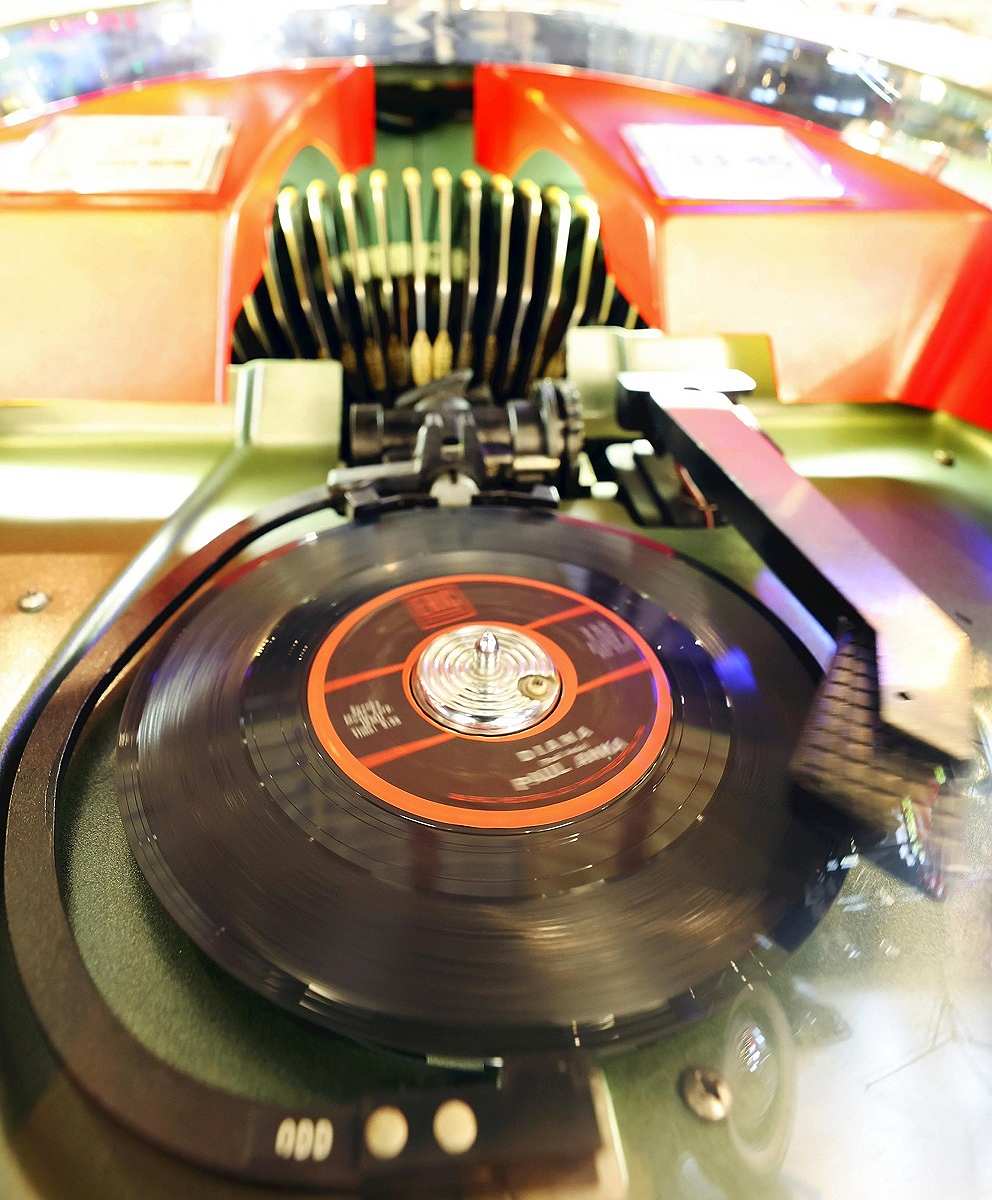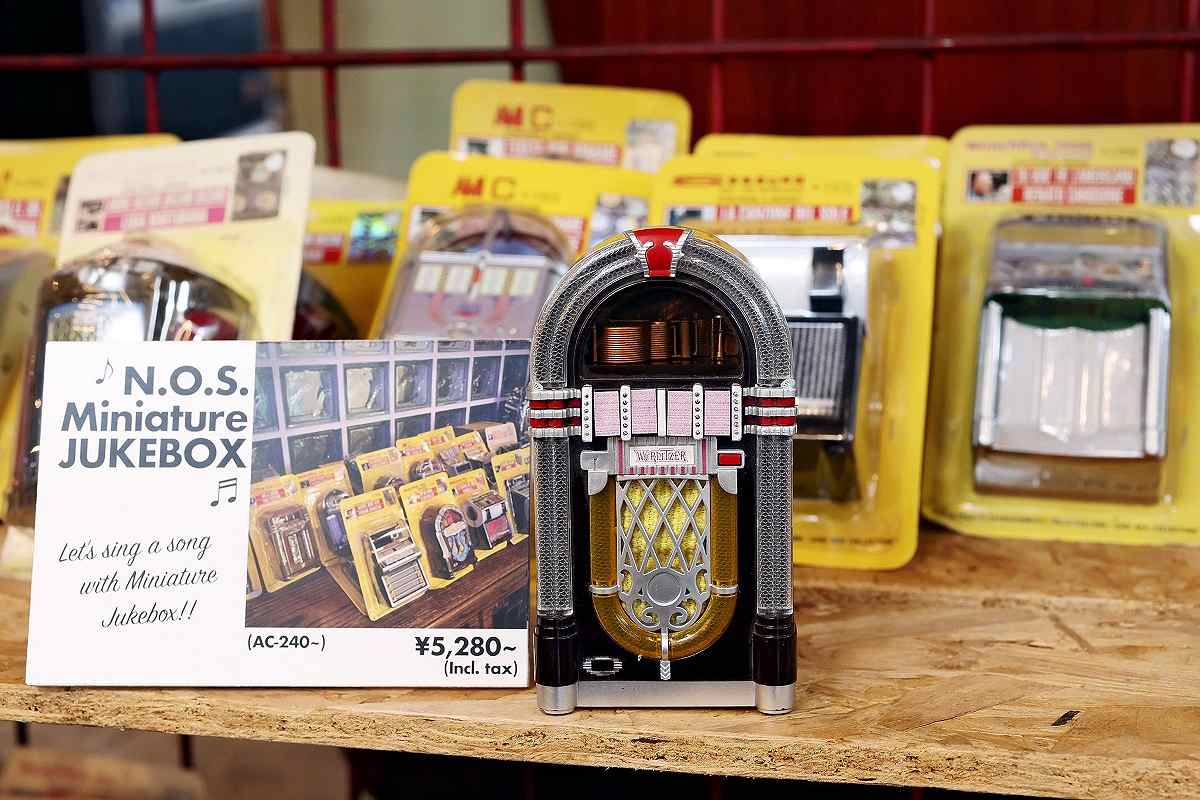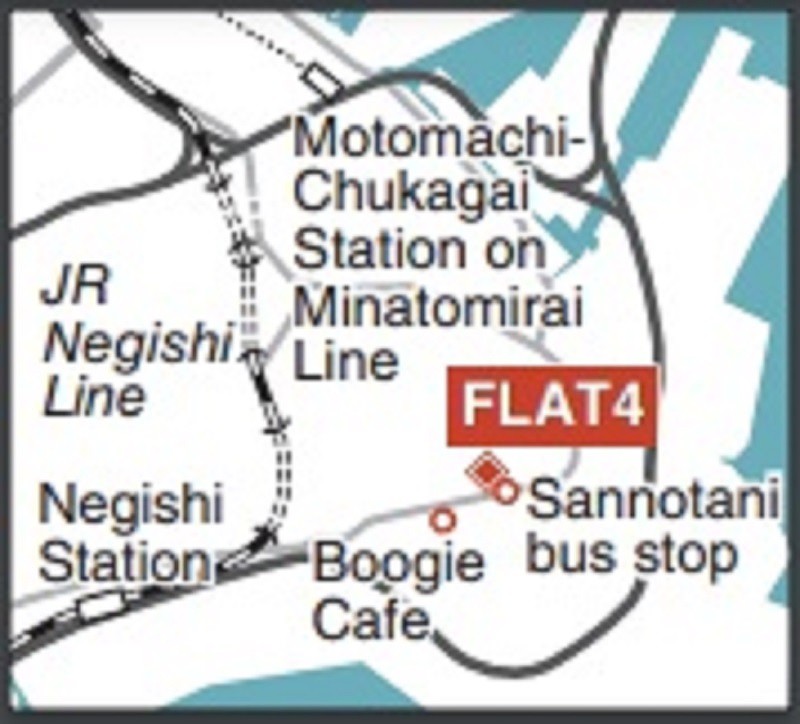
Kenichi Nagaoka, an employee of FLAT4, is seen surrounded by vintage jukeboxes and neon signs.
15:56 JST, July 19, 2023
Influences of American culture linger on to this day in the Honmoku district of Yokohama, where families of U.S. forces members lived for decades after World War II. One of the best examples of this can be found at the FLAT4 garage and jukebox shop, which sells these retro musical fixtures that were very popular in the United States well into the 1960’s.
As I opened the door, I saw neon signs shining inside the shop and I felt as if I were in an old film.
The jukeboxes displayed there are all vintage, including a classy wooden-cased model, a see-through, glazed one and a colorful jukebox that looks like an old arcade game machine. The prices range from ¥500,000 to around ¥2 million.
Jukeboxes were essentially vending machines for popular music. Customers would insert coins, select a song or two and enjoy their favorite music played on vinyl records.

A jukebox transports a vinyl record to a turntable.
In the United States, bars and diners started installing jukeboxes from around the 1930s, creating a culture of drinking and eating while listening to music on demand. After the war, jukeboxes became popular in Japan and were installed in coffee shops, bowling alleys and other places. However, along with the decline of vinyl records, jukeboxes gradually disappeared.
FLAT4 originally dealt in parts for foreign cars, and it started to sell jukeboxes in 2010. When then store president Takashi Komori put on sale about 200 jukeboxes that he had collected over many years, they caught the attention of restaurants and other shops that wanted to re-create a retro atmosphere.
“Every jukebox is elaborately decorated, like an artwork,” said Kenichi Nagaoka, 46, an employee of the shop.
Because there are still plenty of jukebox fans, many advanced models have appeared, such as ones that play CDs and wireless interface models that allow for music playback from a smartphone.
“Carefully listening to music, not as a background to other activities, will allow listeners to discover something new and spend a relaxing time,” Nagaoka said.
I pressed a button on a jukebox made in the 1960s and watched in glee as a vertically stored EP vinyl record was picked up and transported to the turntable. After the needle was placed on the record, my surroundings were filled with the soft sound of tube amplifiers.

Panels showing the names of songs
Inside the magnificent box, which is filled with the dreams of people living in older times, the record was spinning like a galaxy. The scene filled me with the desire to own this jukebox, but unfortunately, it was not for sale.
So instead I bought a miniature, novelty version and brought it back home with a sense of satisfaction.

A miniature, novelty version of a jukebox that costs ¥5,280

FLAT4
Address: 12-4 Honmoku Wada, Naka Ward, Yokohama
Access: Take a Yokohama municipal bus from the Motomachi-Chukagai Station on the Minatomirai Line. From the Sannotani bus stop, it’s a one-minute walk.
Memo: Open from 10 a.m. to 6 p.m. on weekdays and from 10 a.m. to 7 p.m. on weekends and national holidays. The shop also accepts requests for repair and maintenance.
Related Tags
"Features" POPULAR ARTICLE
-

Sanrio to Open Museum in Yamanashi Pref. Dedicated to Founder, Exhibits Include Hello Kitty, Other Characters
-

Autumn Foliage Surrounds Visitors to Tokyo’s Showa Kinen Park
-

My Daughter No Longer Speaks to Me, But I Want to See Her and My Grandchild
-

Kumamoto: Public Bath Refurbished as Library Where You Can Chat, Take Photos
-

Frozen Vegetables: Demand Rises for Convenient, Tasty Domestic Produce
JN ACCESS RANKING
-

Tokyo Economic Security Forum to Hold Inaugural Meeting Amid Tense Global Environment
-

Keidanren Chairman Yoshinobu Tsutsui Visits Kashiwazaki-Kariwa Nuclear Power Plant; Inspects New Emergency Safety System
-

Imports of Rare Earths from China Facing Delays, May Be Caused by Deterioration of Japan-China Relations
-

University of Tokyo Professor Discusses Japanese Economic Security in Interview Ahead of Forum
-

Japan Pulls out of Vietnam Nuclear Project, Complicating Hanoi’s Power Plans

























